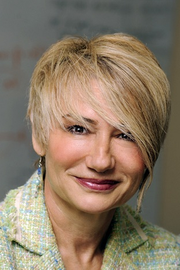
Research Interests
Computational Cardiac Electrophysiology
Sudden cardiac death, caused by rhythm disturbances in the heart, is a major cause of mortality in the industrialized world. The mission of the Computational Cardiac Electrophysiology Laboratory is to conduct research, by developing cutting-edge computational tools and simulation-experiment approaches, to advance the understanding of the fundamental mechanisms that underlie rhythm disorders in the heart and to uncover better strategies for prevention and treatment of these disorders. Research projects include:
Cardiac Arrhythmias in the Diseased Heart and their Termination with Electrical Interventions
The mechanisms by which arrhythmias are initiated and maintained in the heart under various cardiac pathologies are not well understood. We create three-dimensional multi-scale models, from the cellular and sub-cellular to the whole organ, of electrical activity in the normal and diseased heart in order to dissect these mechanisms and suggest better approaches for termination of lethal rhythm disturbances. We work on optimizing the clinical procedure of defibrillation and research alternative low-voltage strategies for arrhythmia termination. We also conduct active research on understanding the role of mechano-electric feedback in the heart in arrhythmogenesis and defibrillation.
Cardiac Microstructure Models from Various Imaging Modalities
We construct mirco-anatomical models of the heart from various imaging modalities, such as high-resolution MRI, diffusion-tensor MRI, optical coherence tomography, etc. The development of these models allows us to explore how cardiac micro-anatomy in the normal and diseased heart contributes to the generation of cardiac arrhythmias. These models also are invaluable tools in exploring issues related to the understanding of infarction and remodeling in the diseased heart, as well as in optimizing ablation and cardiac resynchronization therapy.
Source: http://www.bme.jhu.edu/people/primary.php?id=674